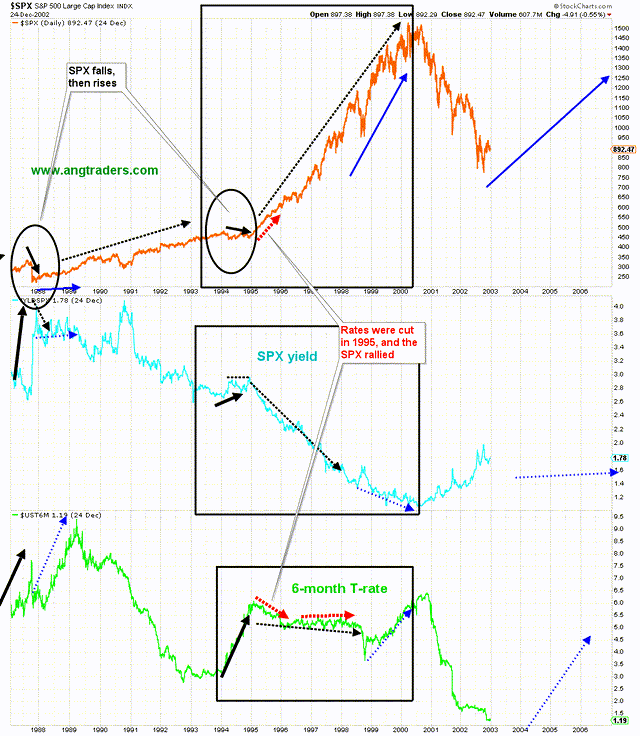Why The Bull Market Continues
In the short term, the seasonal weakness is approaching, but the change in monetary conditions (easing of rates) could support the SPX during the expected September/October weakness.
The long-term primary trend has not changed. It remains firmly bullish. The black boxes below, highlight the similarity between the late 1990s and today. In 1995, rates were cut after having been raised rapidly the year before. Similarly, in 2022 rates rose rapidly and now in 2024 they are set to turn lower. If the pattern similarity continues (black boxes), then we can expect the SPX to stay in its primary bull trend for the foreseeable future.

The next two charts give a closer view of the pattern:
1995:

2024:

Fund-Flows

- The Treasury net-transfer is $229B lower than last year. (Nominal-spending is $205B higher.)
- The change in bank credit is $582B higher.
- The Fed’s IOR (interest on reserves) is $102B higher.
- Total net money-creation is $455B higher than last year.
The market is driven by money, and the higher (total) money created this fiscal-year explains why the market continues in a primary bull trend.
More By This Author:
Republican And Democratic Presidents, Which Is Better For The Economy And Stock Market?
There Is A Divergence In The Market
The Bull Market Is Still On, But ...



